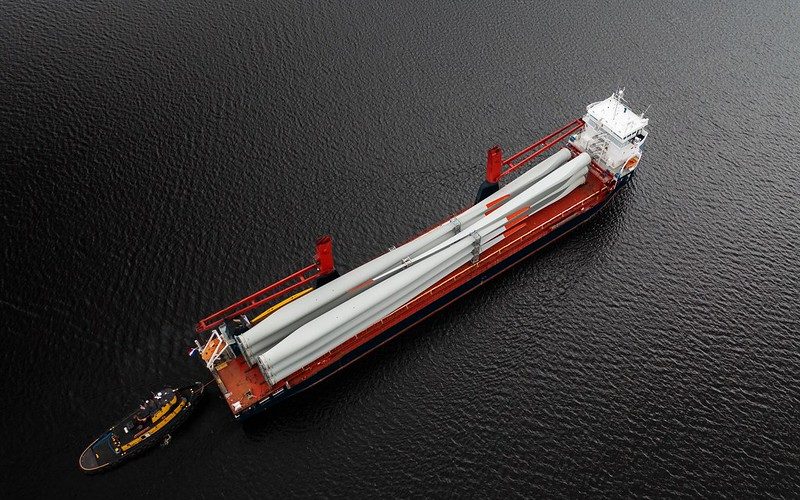(OTTAWA) — U.S. Great Lakes ports and the St. Lawrence Seaway reported sharp increases in cargo volumes of construction materials, steel and iron ore in May to supply renewed manufacturing and building activity in the region.
According to the latest statistics from the St. Lawrence Seaway (from March 22 to May 31), overall cargo shipments totaled 8.1 million metric tons, in line with last year. But in the dry bulk category, cement and gypsum shipments totaled more than 776,000 metric tons, up 51 percent over the same period in 2020 and 59 percent higher than the five-year average.
General cargo shipments through the St. Lawrence Seaway were up 37 percent compared to the same period in 2020 (and 23 percent above the five-year average), driven by steel imports from Europe being used in Ontario and U.S. Great Lakes cities for auto parts, batteries and appliance manufacturing as well as construction.

“Prices and demand for raw materials are surging around the globe as well as in the Great Lakes-St. Lawrence region as the pace of economic recovery has taken everyone by surprise,” said Bruce Burrows, president and CEO of the Chamber of Marine Commerce. “Our marine highway is delivering products and materials to support everything from infrastructure and building projects, to automotive and consumer goods manufacturing.”
May was a productive month at the Port of Toledo, with total tonnage up 20 percent over the same period in 2020. Highlights in year-to-date totals include a 45 percent increase in grain, 29 percent increase in dry bulk, iron ore was up 27 percent, and coal was up 15 percent.
“We saw an uptick in our usual commodities like coal, grain, and iron ore coupled with overseas exports of products like petroleum coke and distillers dry grains,” said Joe Cappel, vice president of business development for the Toledo-Lucas County Port Authority.
The Toledo port also received and unloaded its new Liebherr 550 mobile harbor crane shipped from Liebherr’s factory at the Port of Rostock in Germany. The new crane is currently being assembled and will be ready to work at the general cargo facility operated by Midwest Terminals. “The crane is fitted with various attachments for handling all types of products and, with a massive lift capacity, will greatly improve our efficiency for loading and unloading vessels,” Cappel said.
At the Port of Cleveland, general cargo numbers (including imported steel, containerized goods and project cargo) increased by close to 50 percent compared to April, and also outperformed May 2020 numbers by close to the same percentage. Bulk terminal tonnage grew by 35 percent compared to April and by 20 percent compared to 2020 same period.
“Our general cargo terminal has been buoyed by increased activity in the construction and automotive sectors as we continue to return closer to normal economic levels from the COVID pandemic,” said David Gutheil, chief commercial officer of the Cleveland-Cuyahoga County Port Authority. “The rise in our bulk terminal tonnage is due to increased activity in the local Cleveland Cliffs steel mill, which is fed by the delivery of iron ore. We have also completed the expansion of an ore tunnel at our bulk terminal, which now allows us to combine two grades of iron ore upon delivery to the mill, which has increased our throughput at that facility.”
Topping 3.2 million short tons for the second consecutive month, total maritime tonnage through the Port of Duluth-Superior also continued its robust climb in May 2021.
Almost every major cargo category finished the month ahead of its five-season average tonnage, led by cement, which arrived at a pace more than triple its average through May. Coal and coke (+6.9 percent), iron ore (+6.3 percent) and limestone (+5.4 percent) also outpaced their respective five-season averages. The port’s total float through May 31 (7.5 million short tons) exceeded the five-season average by 5.9 percent; it topped the pandemic-plagued 2020 pace by nearly 40 percent.
“Since 2016, May tonnage through Duluth-Superior is typically near 4 million short tons, with 2020 being the obvious outlier at only 2.5 million,” said Duluth Seaway Port Authority Executive Director Deb DeLuca. “The May 2021 figure – almost 3.3 million short tons – signals a significant rebound from those COVID-induced lows of last year, and hopefully a harbinger of continued post-pandemic economic recovery.”
– Chamber of Marine Commerce

